Portrait Competition 2012
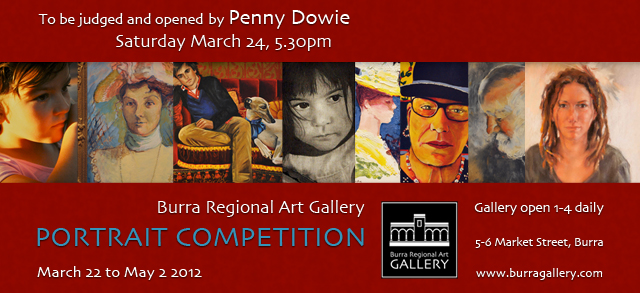
PRIZES
Open to Artists in all mediums.
There are no categories as we are seeking to encourage innovation and diversity.
First Prize – $500
Second Prize – $250
Volunteers and Hangers Choice – $100
Secondary School Students – $100
Primary School Students – $50
Our judge this year is Penny Dowie, 1988 winner of the Doug Moran National Portrait Prize.
Cheques will be presented to all winners on the night.
UPDATE: Unfortunately due to ill health Penny Dowie has had to withdraw from judging duties this year but fortunately artists Robert Hannaford and Alison Mitchell have stepped up to assume the judging duties. Hannaford has painted many contemporary portrait commissions during the last 40 years including paintings of Dame Joan Sutherland, Sir Donald Bradman and Paul Keating, he is also well know for his landscapes, still lifes, nudes and sculptures.
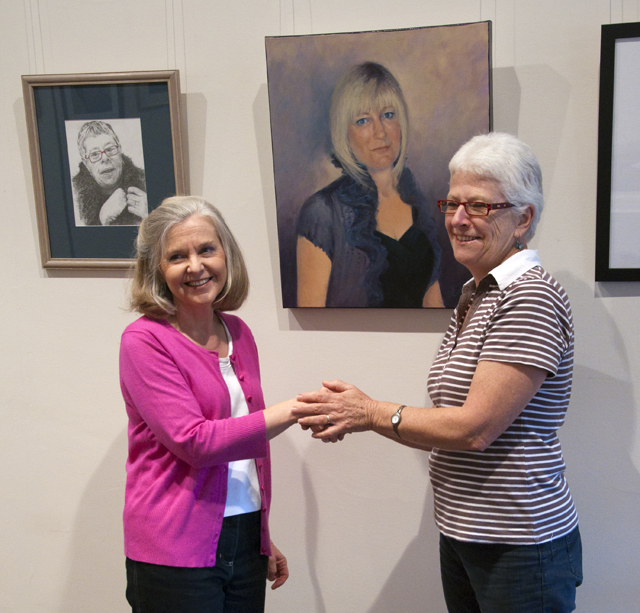
Pip congratulates Roslyn Batten, winner of the Volunteers and Hangers Choice
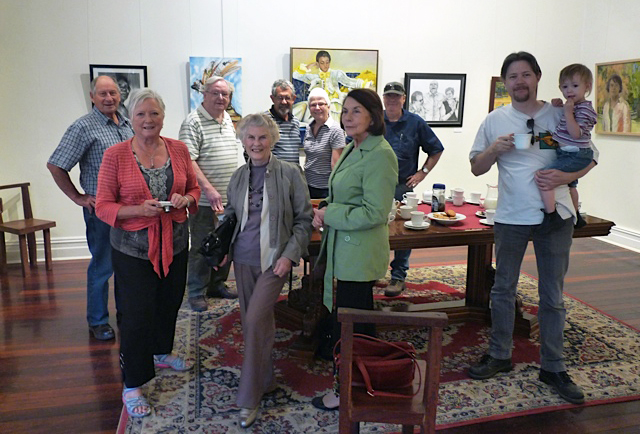
Volunteer & Hangers Prize selectors
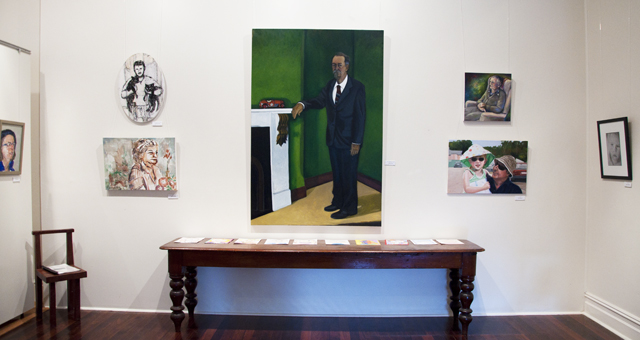
Main Gallery
Review by Artivist
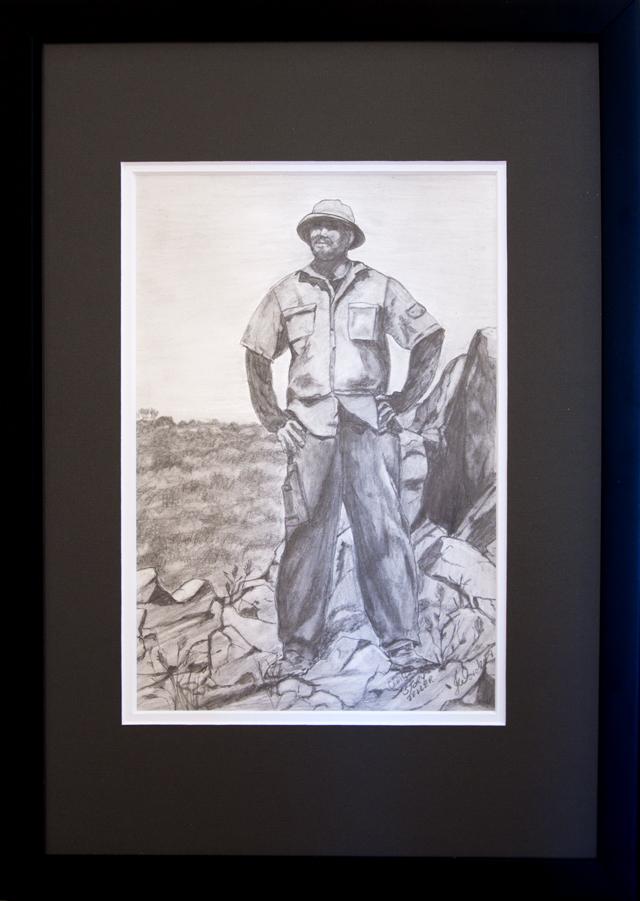
Jan Worden - Storyteller - Pencil - $160
Jan Worden’s pencil drawing “Storyteller” shows an outback gentleman poet or explorer, standing high in searing sunlight, the world at his feet. It is carried out in pencil, a modest medium well suited to this subject. Drawing is a category we especially encouraged this year, and it is good to see many artists have taken up the challenge.
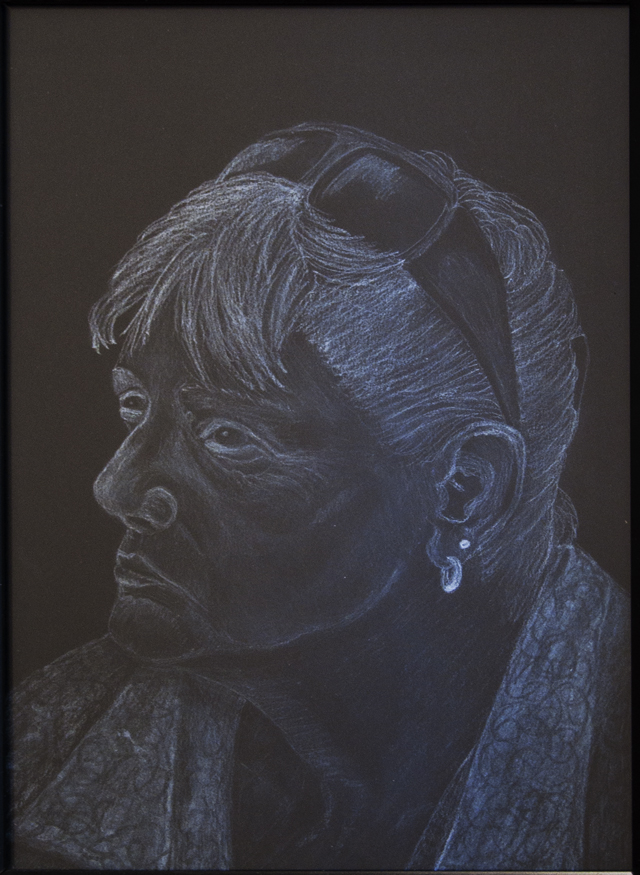
Sharyn Sinclair-Negative-Drawing
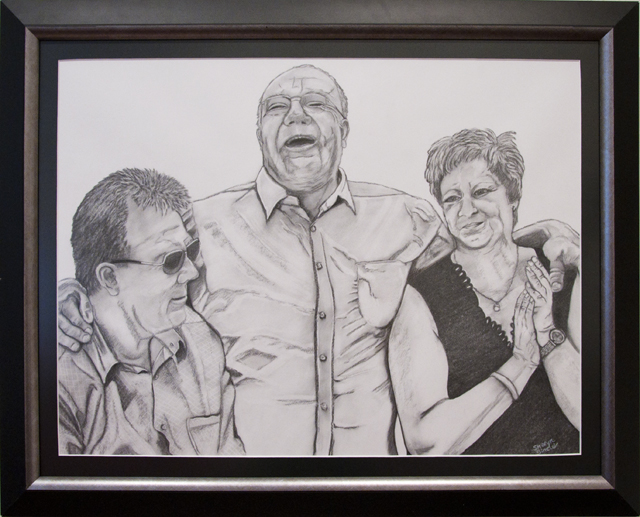
Sharyn Sinclair-Happy Days-Charcoal-$170
Sharyn Sinclair’s works “Negative” and “Happy Days” are drawings, the latter in charcoal. “Feeling Blue” and “Mourning” are two strikingly different interpretations of the same sitter, one charcoal, the other in acrylic. It’s great to see a number of works carried out by one artist, giving us a view of what they are about in the way they approach their subject. In the gallery the works of each artist do not hang together unless they are obviously a pair.
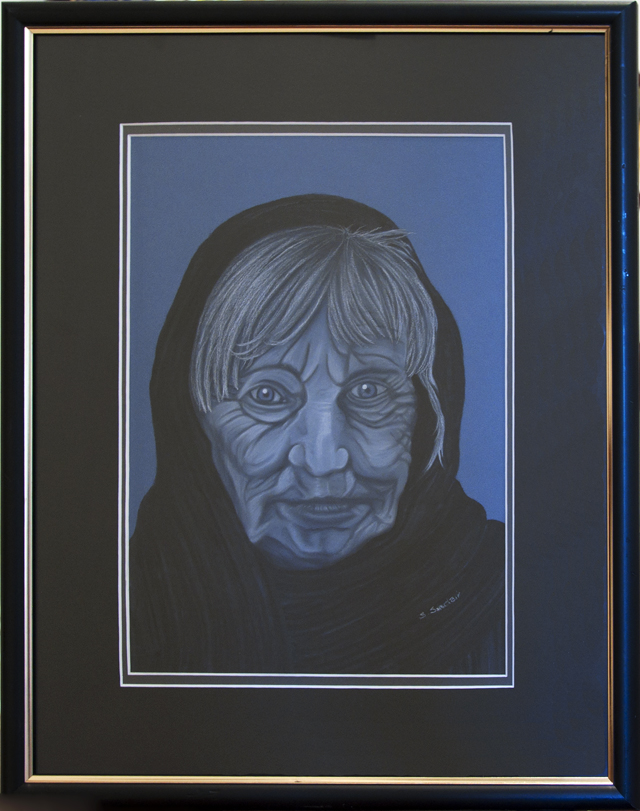
Sharyn Sinclair-Feeling Blue-Drawing
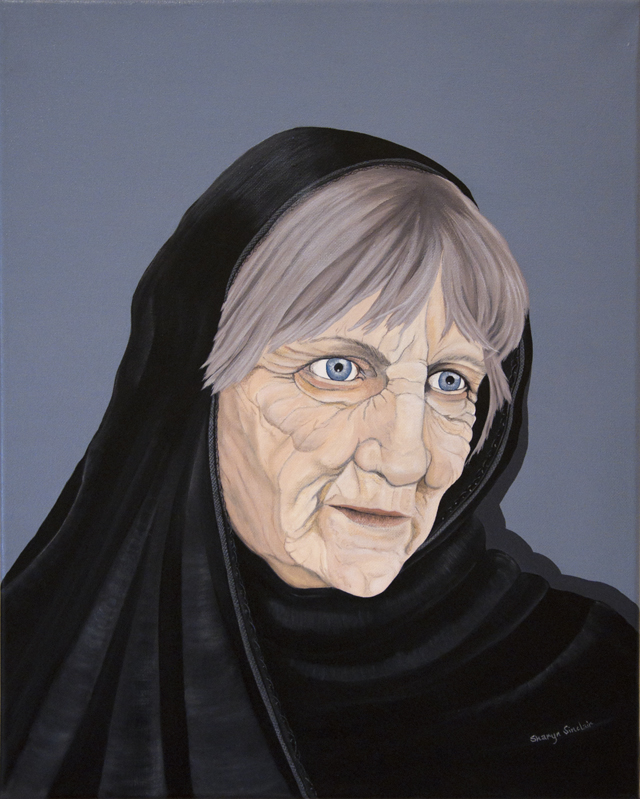
Sharyn Sinclair - Mourning - Acrylic - $200
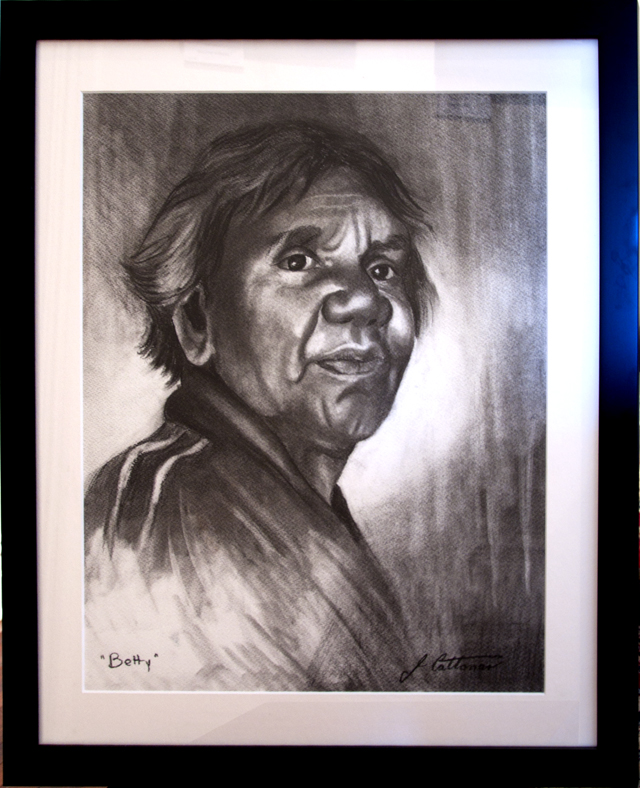
Jenny Cattonar - Study of Betty - Charcoal pencil - $450
Here is a beautiful drawing from Jenny Cattonar “Study of Betty”, in charcoal. The marks in the background are multi-directional and the positioning of the title distracting, but this is a strong and courageous rendition, as many have remarked. Jenny’s other contribution, an oil painting in traditional portrait style, hangs above the Annex fireplace, is titled simply “Betty”.
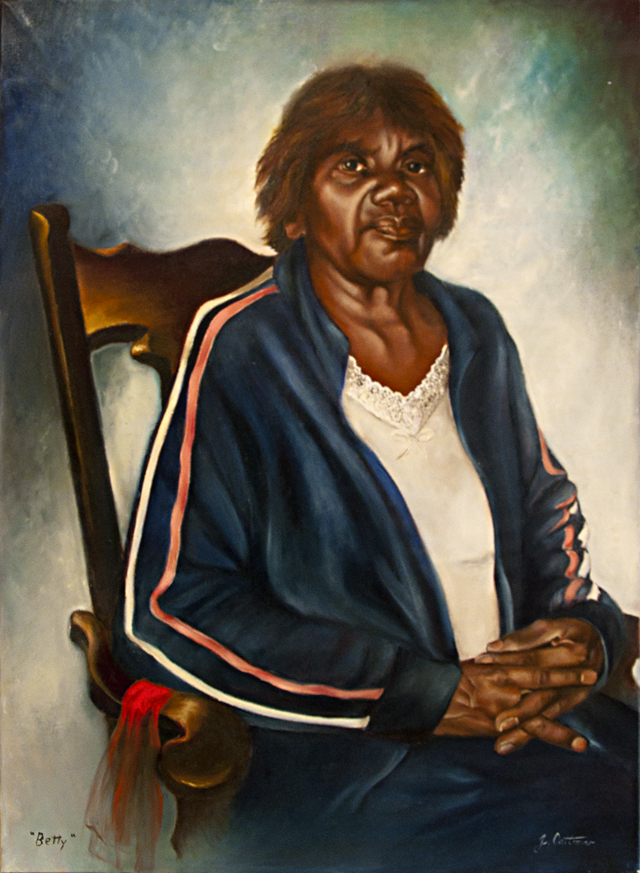
Jenny Cattonar - Betty - Oil on canvas - $1600
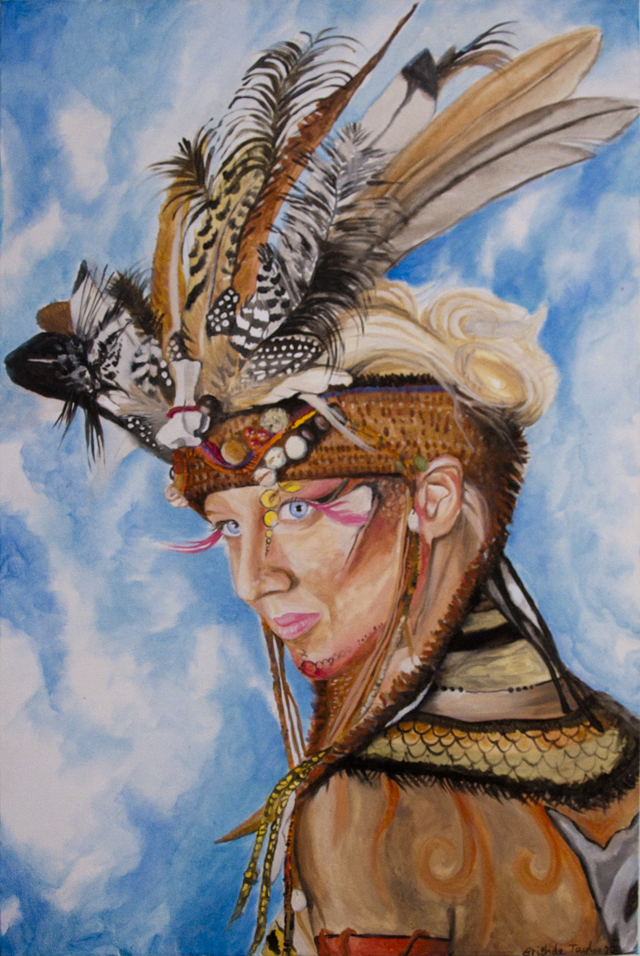
Brighde Taylor - Witchdoctor - Oil on canvas - $450
“Witchdoctor” in oils by Brighde Taylor is a startling portrait of the artist’s friend wearing body paint and a feathered head-dress low on the forehead, causing the ear to stick out, engaging the viewers interest. The paint is too thin for the power of the subject but this artist has a marvellous way with organic textures, if not skin and sky. It will be interesting to see further work from her in future exhibitions.
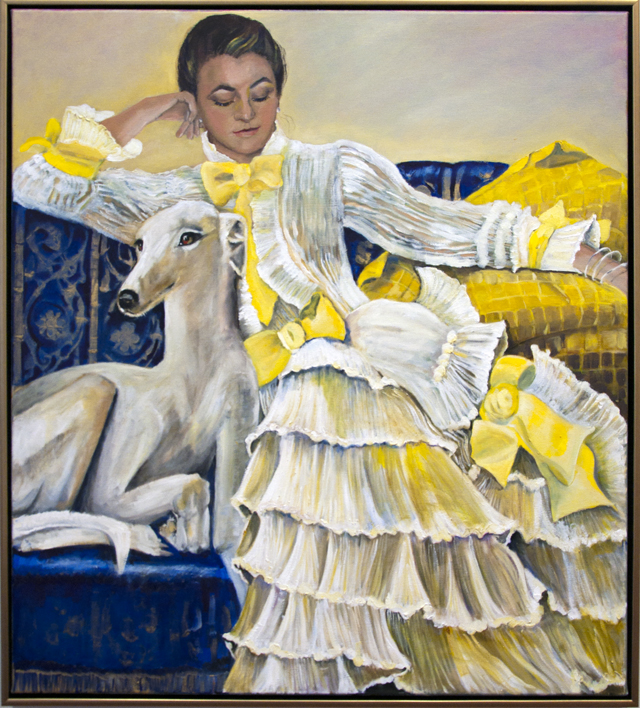
Julie Wilson - The Borrowed Dress - Oil - $3,000
One of two contributions from Julie Wilson “The Borrowed Dress” is a composition in gold and royal blue, with the daintiness of Delft china. The dog is growing older, we have seen her before, but the children are still young and filled with life. The delightful small oil “Hayley” in pinks and browns shows choice of colour is an important tool. The colour gives freshness to the work, it makes people love it and want it, and it shows the girl as childhood’s representative.
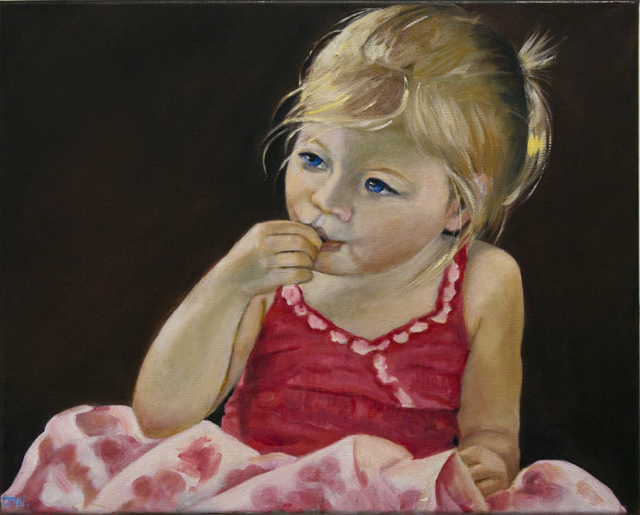
Julie Wilson - Hayley - Oil - $480
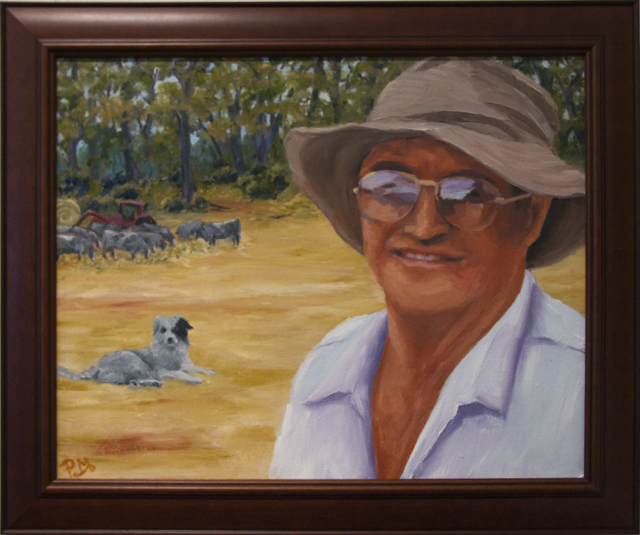
Pauline Morrison - Neville and Patch - Oil - $400
Here is Pauline Morrison’s “Neville and Patch”. Both dog and man have a patch over the eye(s), in Neville’s case a pair of sunglasses. Seeing is everything. The link between man and dog is explained by the clever connection in the title. The background is in tune with the subject, a farmer feeding his cattle, taking time out for a quick word with the viewer before carrying on his day’s work. Soon he will go on his way, leaving us with a lasting imprint on our retinas and the smell of dust in our nostrils.
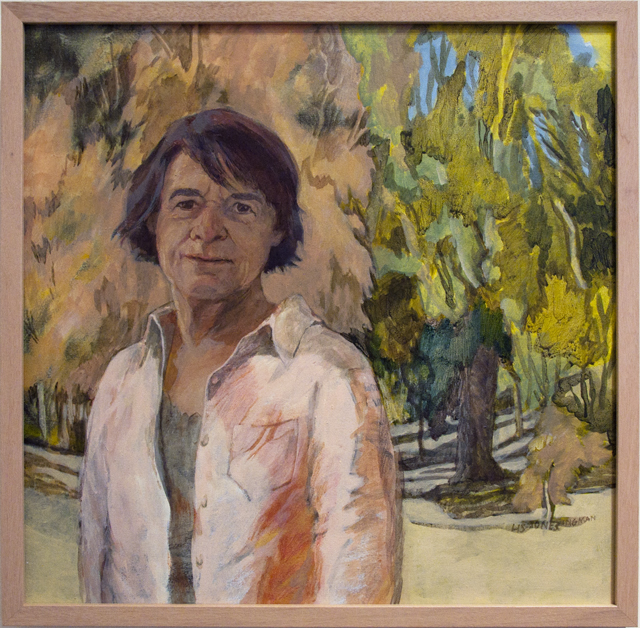
Lis Jones Ingman - Along Burra Creek - Acrylic - $450 2nd Prize, Open Section
Lis Jones Ingman’s acrylic painting “Along Burra Creek” portrays a local resident out walking, catching our eye with a quick greeting, and disappearing beyond the frame. She passes by and all we see are the trees in the creek-bed, quickly sketched with a patch or two of blue sky showing through, a picture of optimism, resilience and moving on. Sitting for a portrait is a challenge for artist and sitter when both are at their most open and frank.
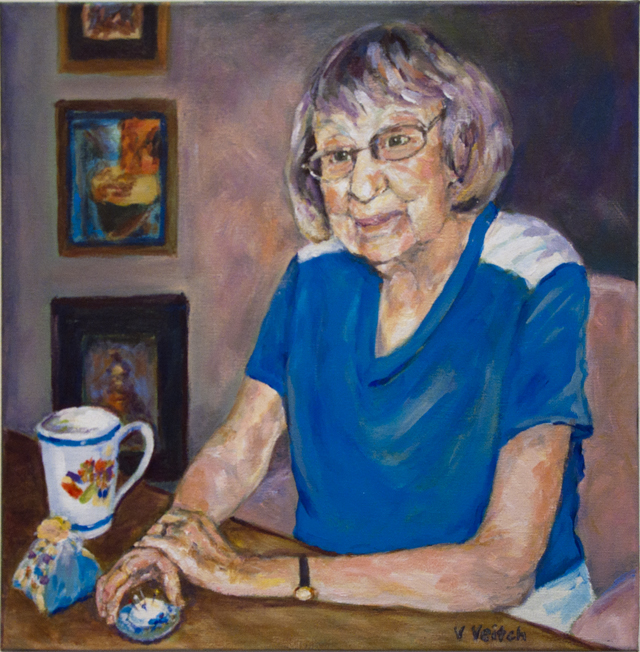
Valerie Veitch - Ella Rome, Creator and Mentor - Acrylic - $150
Painted by Valerie Veitch, “Ella Roma” is an affectionate portrait in acrylic on canvas of a creative and sensitive lady, which the painting reflects perfectly. “Considering Scotland” also shows us an idea – looking into the past with a sad smile. The direction of a person’s thoughts can be mysteriously revealed in a portrait. Together with the choice of colours and title, this painting gives us a feeling of the nostalgia and fond regret of the sitter. There is humanity in these two works, and empathy on the part of the artist.
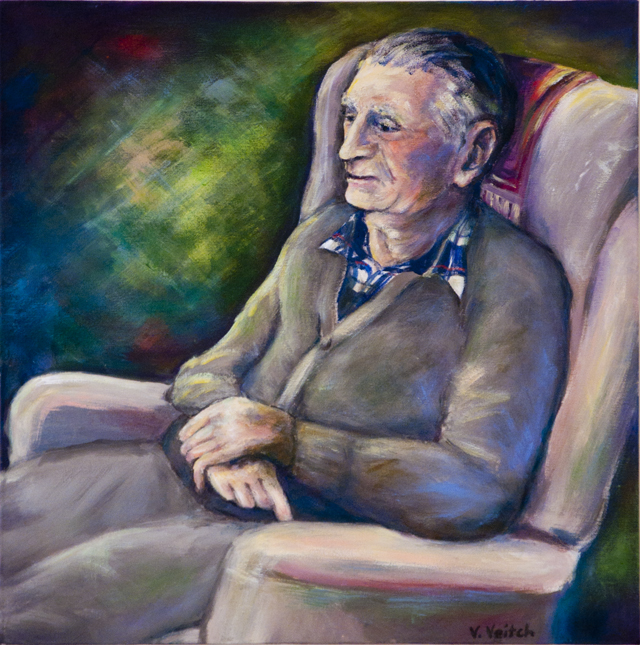
Valerie Veitch - Considering Scotland - Acrylic - $150
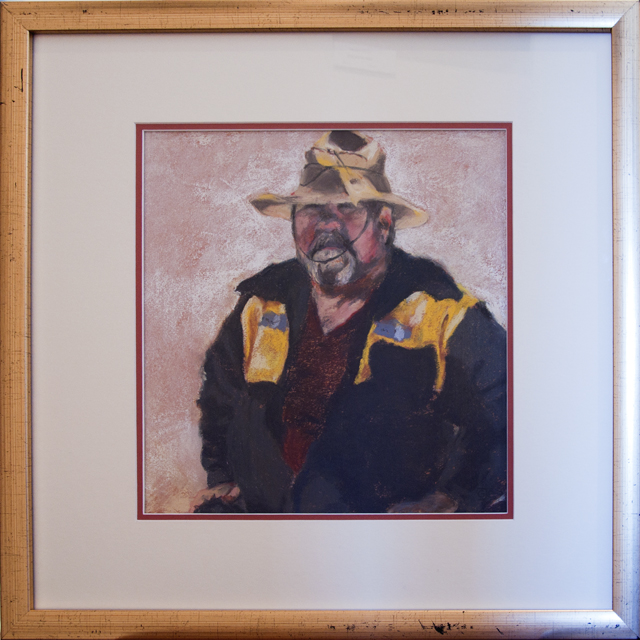
Glenys Christopher - The Bard - Pastel - $300
“The Bard”, a pastel by Glenys Christopher shows Burra’s poet laureate in bush gear, all-seeing beneath his crappy old hat. Glenys would be Burra’s “artist” laureate, if there were such a thing, in the footprints of Len Bence. Her influence on Burra watercolour painters has been great and her generosity in sharing her skills is widely appreciated. Glenys is a leading member of the Burra Art Society and as such encourages others to show their work and support the Burra Gallery for the enjoyment of all.
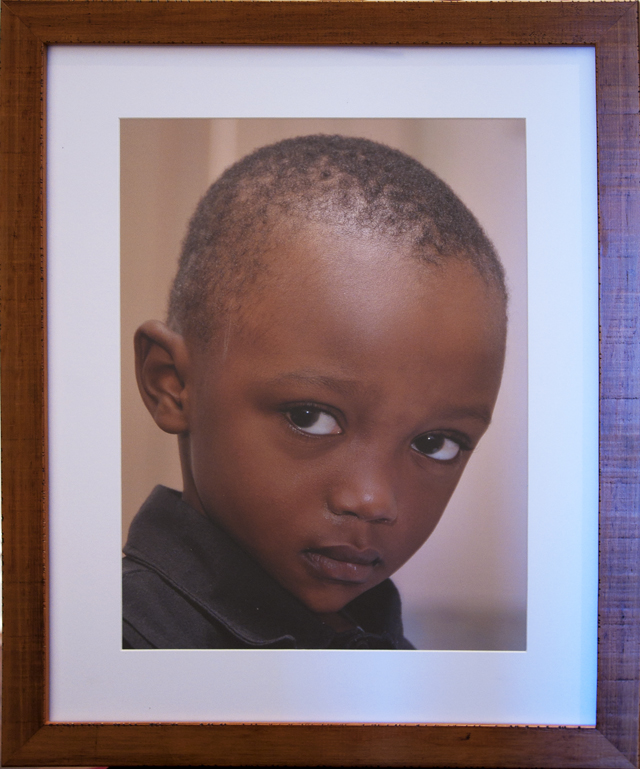
Alan Logue - Eyes of Innocence - Photography - $195
“Eyes of Innocence”, an engaging photograph of a young boy by Alan Logue, and whose pair of figures, one a Chinese man greeting the viewer with hand raised in greeting, the other “The Face of Traditional Japan”, unfortunately generalise the ethnicities. Perhaps this is travel photography rather than portraiture, but there are so few opportunities for photographers to show their work in a context they would prefer. Photography has been neglected in this exhibition – we hope to do something about that next year.
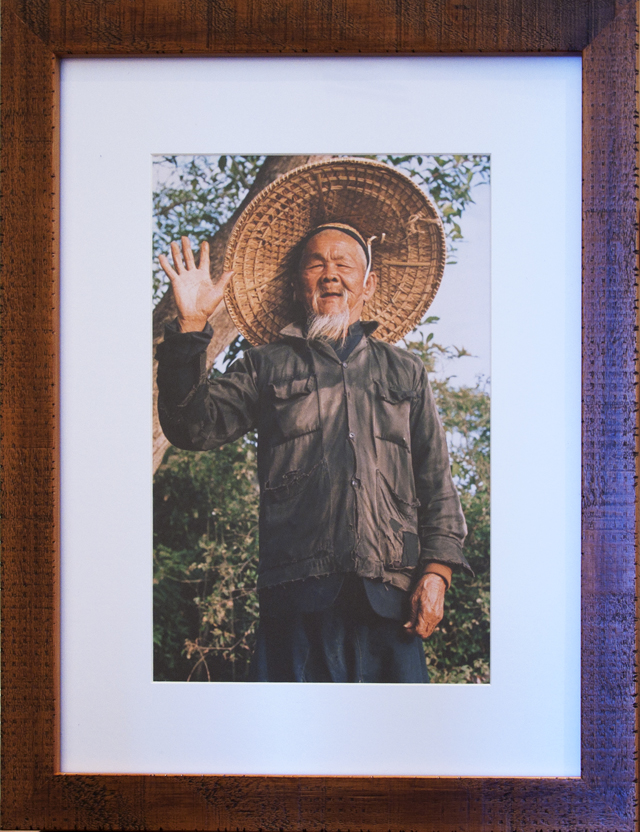
Alan Logue-Photography
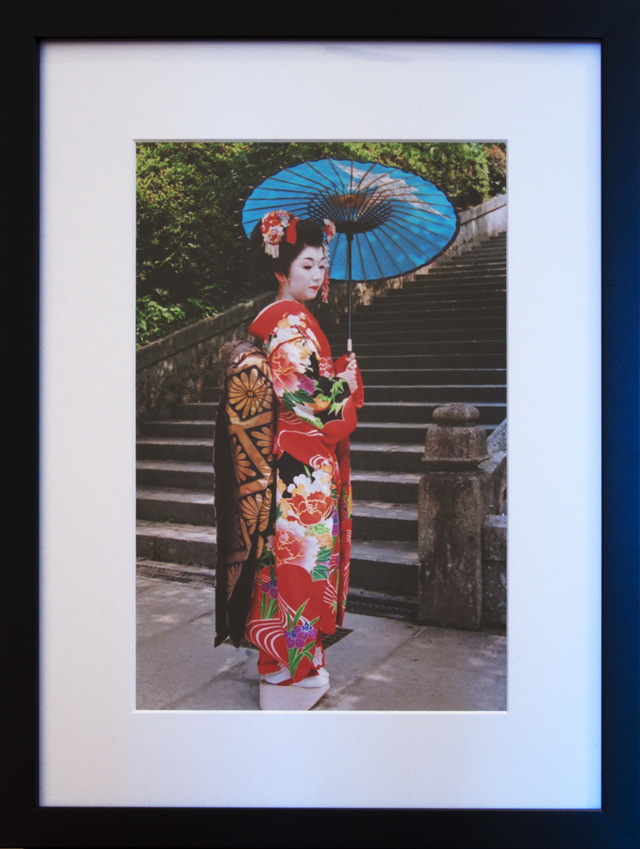
Alan Logue-The Face of Traditional Japan-Photography
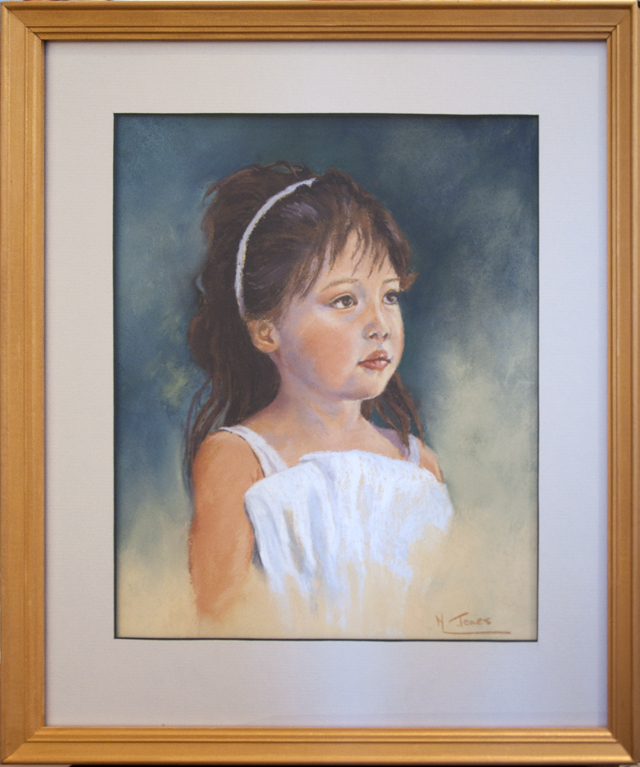
Norah Jones - Sophie - Pastel - $250
“Sophie” in pastel by Norah Jones, shows a little girl who probably has a good deal of wisdom for her age if the name is anything to go by. Norah produces portraits of children’s faces as mementos of childhood innocence soon past. Her work fulfils that task and encourages parents to cultivate a love of beauty, and to look at art as expression and as something they can attain to.
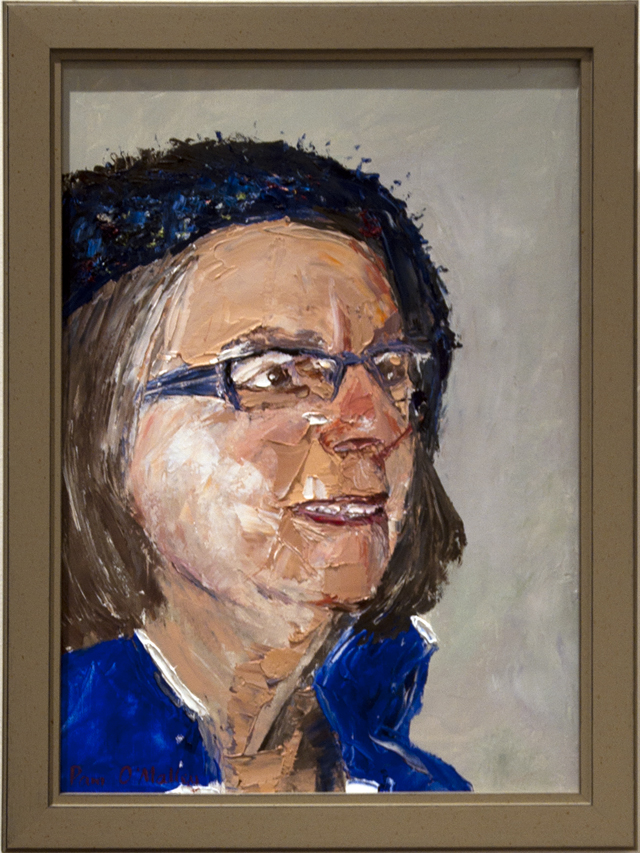
Pam O’Malley - Study - April - Oil - $300
In “Study – April” by Pam O’Malley, oil paint is vigorously applied with a palette knife, not the easiest tool for finding subtlety of expression. Pam has a go and makes it work with a sharply humorous interpretation of an engaging talker. Her other works are “Mates”, a father/daughter portrait in acrylic and the fresh and sincere charcoal drawing “Nat”.
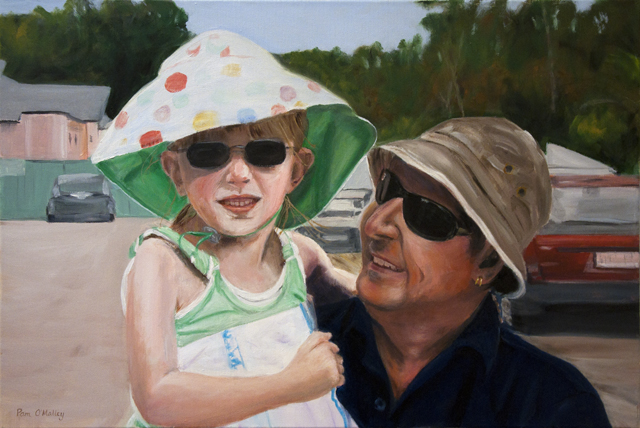
Pam O’Malley - Mates - Oil - $350
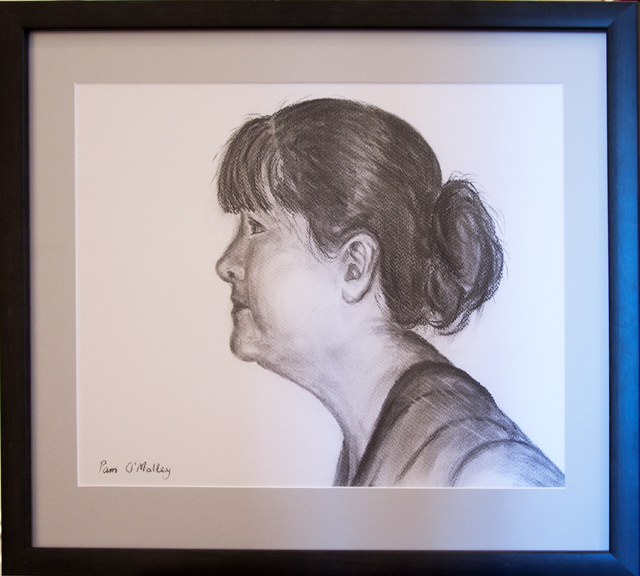
Pam O'Malley-Nat-Charcoal
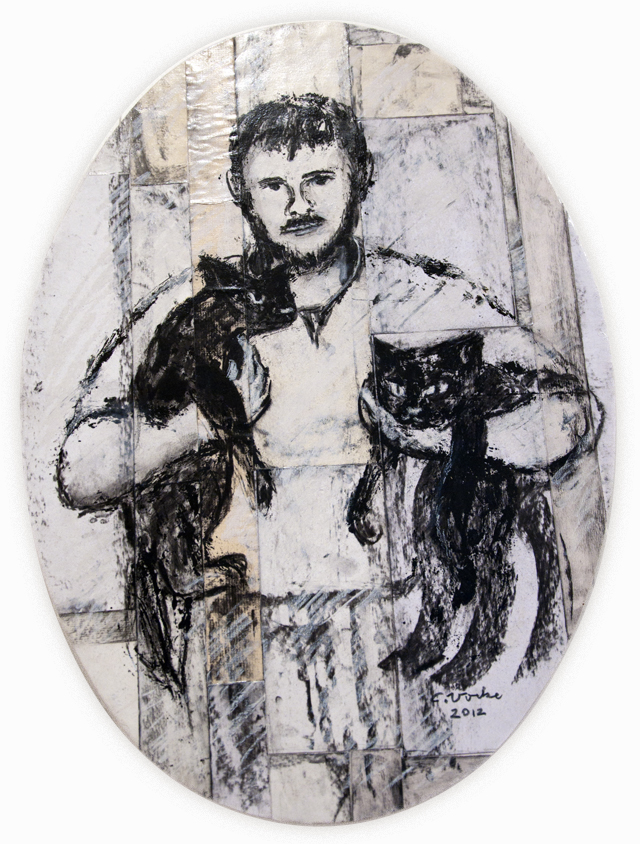
Christian Vocke-Graham with his Cats-Mixed Media-$290
Christian Vocke’s two entries “Graham with his cats” and “Betty M” are experiments with technique as well as showing individuals. Both are works on paper glued to canvas to form the painting surface. Paint is loosely applied and the results open to scrutiny. Christian is a fearless artist. These two works show the variety of his approach and why he is an important part of our mid north artistic life. Christian demonstrates by example how to work hard, to try different means of expression, and build our skills in new ways.

Christian Vocke - Betty M - Watercolour - $290
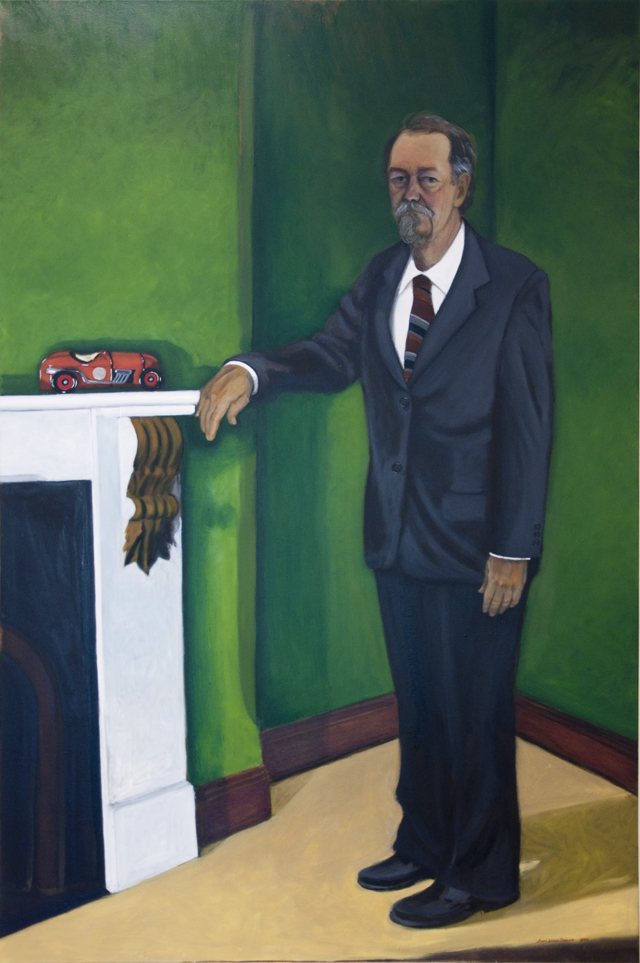
John Taylor - Self portrait with red racing car - Oil on canvas - $2,500
“Self portrait with red racing car” is a dramatic self-portrait by John Taylor, dressed in his baggy old suit and tie, brought out one last time, in memory of days gone by. Green and black, with the red car in pride of place on the mantle – a dream fulfilled? A self-portrait is surely the hardest thing of all to paint. What we see in the mirror is often mistaken for how we think of ourselves (perhaps a bit younger or more good-looking). John has tried hard to be objective and at the same time to wryly tell us about his young man’s yearning – after all, it doesn’t really matter any more, does it?
Now we come to Heike Dargusch’s two lovely and much admired graphite pencil works “Kysha” and “Eyes that have seen so much”, both rendered with subtlety and delicacy in a style and technique unique to this artist. Sometimes Heike’s works, really paintings in pencil, are mistaken for photographs, yet she is prepared to deviate from what the photos would tell us which is perhaps what makes these works so intriguing.
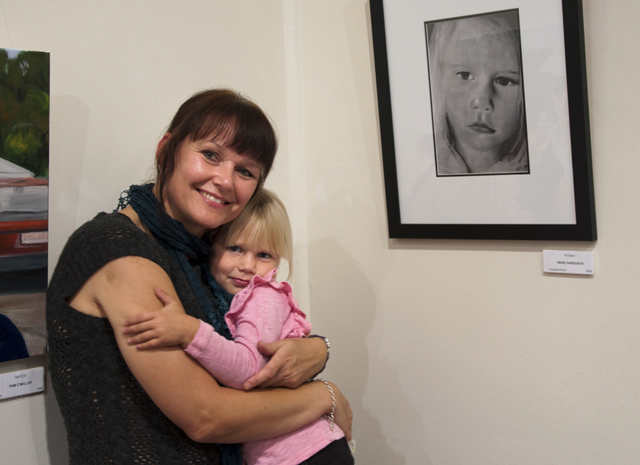
Heike & Kysha
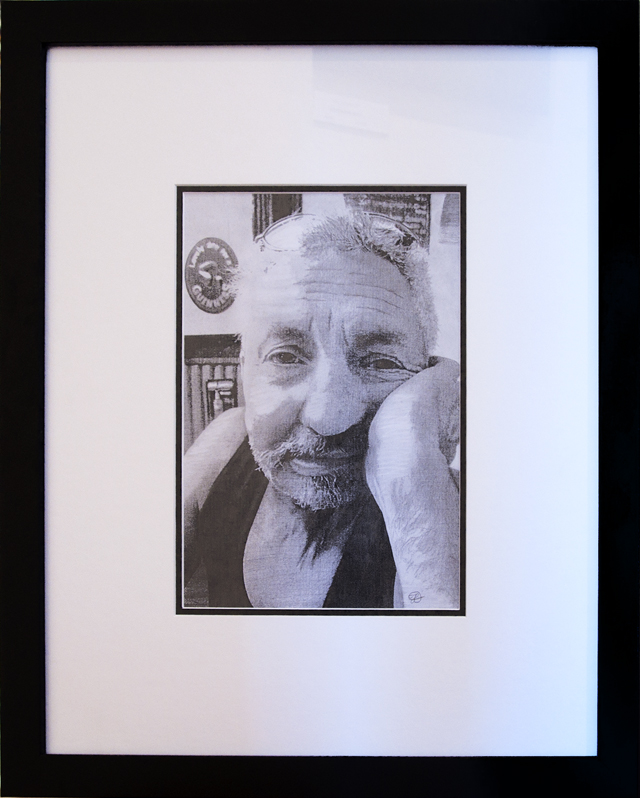
Heike Dargusch - Eyes that have seen so much - Graphite Pencil - $450
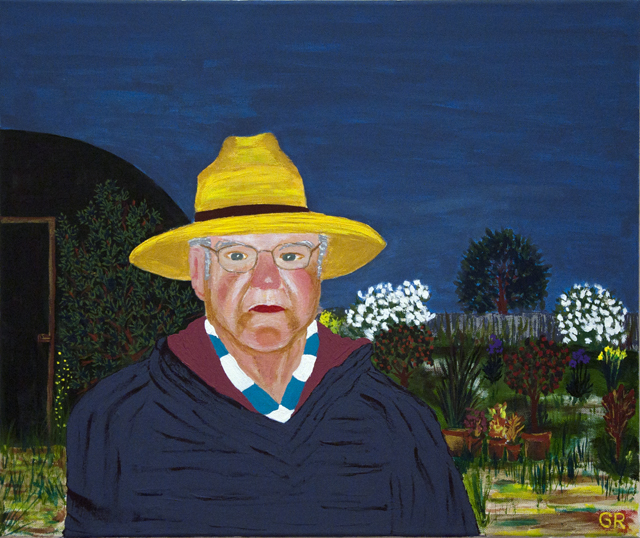
Glynne Ryan - John the Gardener - Acrylic - $250
“John the Gardener” painted by Glynne Ryan in decorative naïve style, says much about the subject of the painting who is a well-known Burra character. It also tells us about the artist. After looking at the painting as a whole, examine the areas of detail – the way in which Glynne is finding his touch is evident in parts of the brushwork and the colour and patterning. He is prepared to take his time, and paint his own honest view. His determination shows in the work.
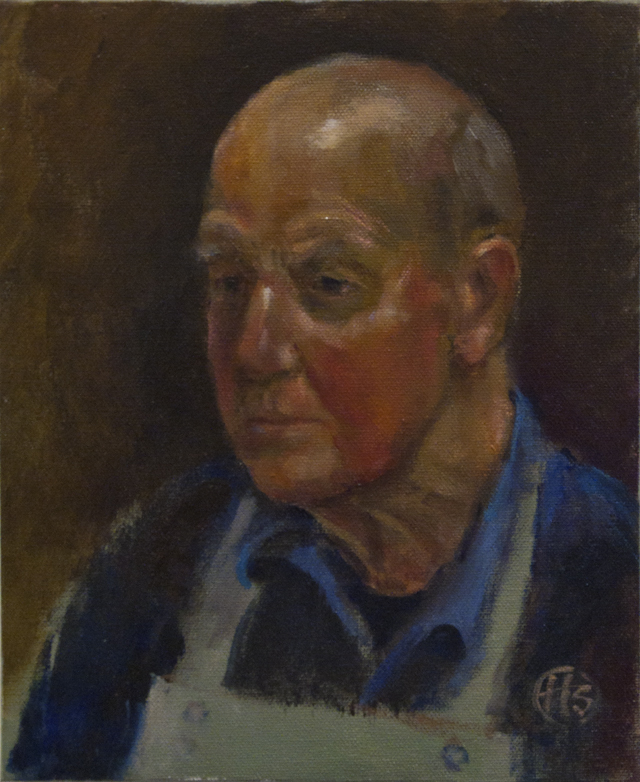
Harry Sherwin - Brother John May of Sevenhill – Winemaker - Oil - POA
“Brother John May of Sevenhill” is a small delicious oil painting by Harry Sherwin. Background in burnt umber and indigo pushes forward the ruddy face of the outdoor work, whose steady downward gaze is that of the thinker and man of God. The subject’s character is expressed in his domed head and the overalls he wears. A work shirt with top button undone adds to the effect. All aspects contribute and none detract.
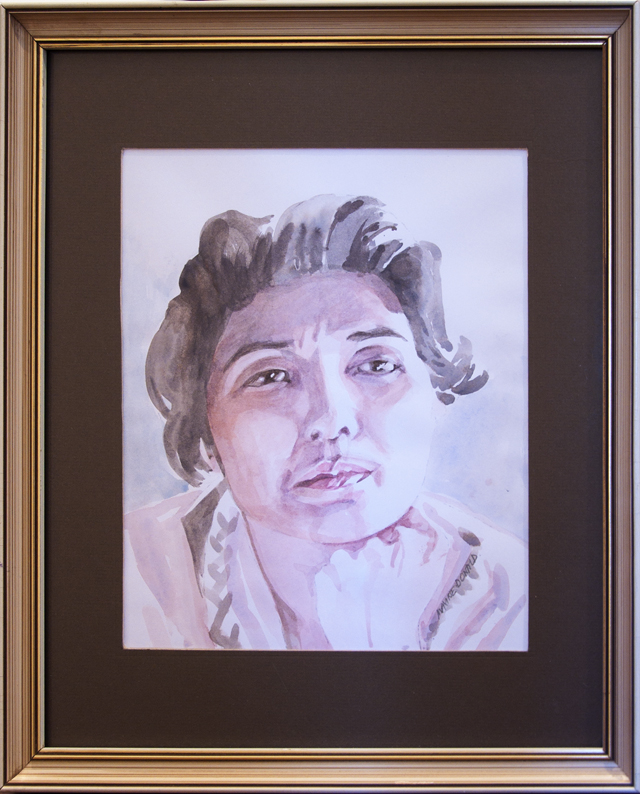
Maxine Donald - Train Traveller - Watercolour - $200
Maxine Donald has contributed two works, “Train Traveller” a beautifully seen watercolour of a woman rattling along in the train tired at day’s end, and “Red Specs” energetic and alert shown by the drawn line. Two different aspects, unrelated in technique, give us information about the painter and her approach to picture-making, how she responds to the subject, her intention, and what we can learn from the result.
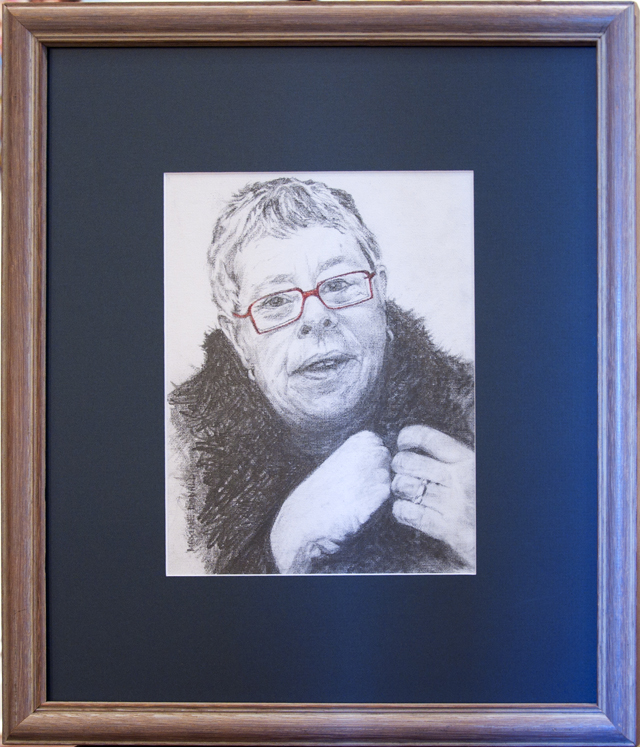
Maxine Donald-Red Specs-Drawing
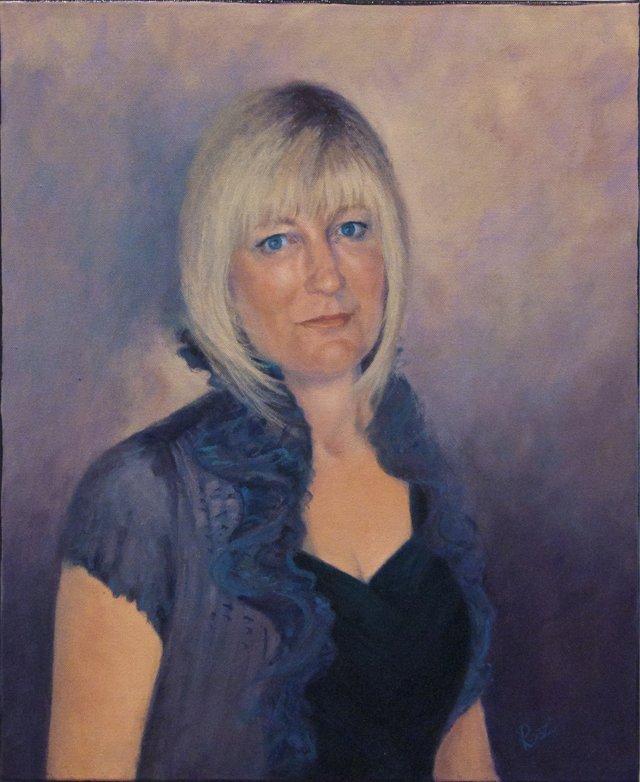
Roslyn Batten - This Fine Day - Winner Volunteers and Hangers Choice
“This fine day” by Roslyn Batten shows the subject of the oil painting out in her best for a day in town. The paint is flat, the face seems void of expression. What is going on behind those cool eyes? Textures are those of the sitter and what do they tell us? – satin’s sheen and the fine immaculate hair frame a strong and determined face, charged with ambiguities given the unsmiling mouth and challenging gaze.
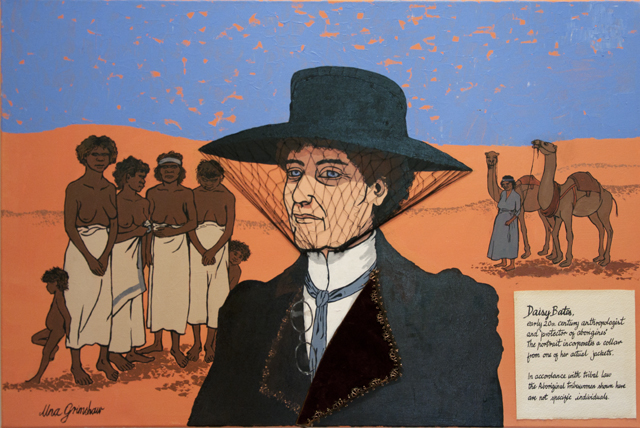
Una Grimshaw - Daisy Bates Protector of Aborigines - Acrylic + fabrics - $700
Una Grimshaw’s three entries are decorative and imaginative. “Daisy Bates” employs the use of collaged materials very successfully, with a colour scheme of mid-orange and cobalt blue of equal tone, defined by black. Other colours are interesting mixes of those three. The portraits are “Mary Singing” and “David Morgan, Composer Transposed”, the latter as complicated as the title suggests in its decorative, exotic and bizarre elements.
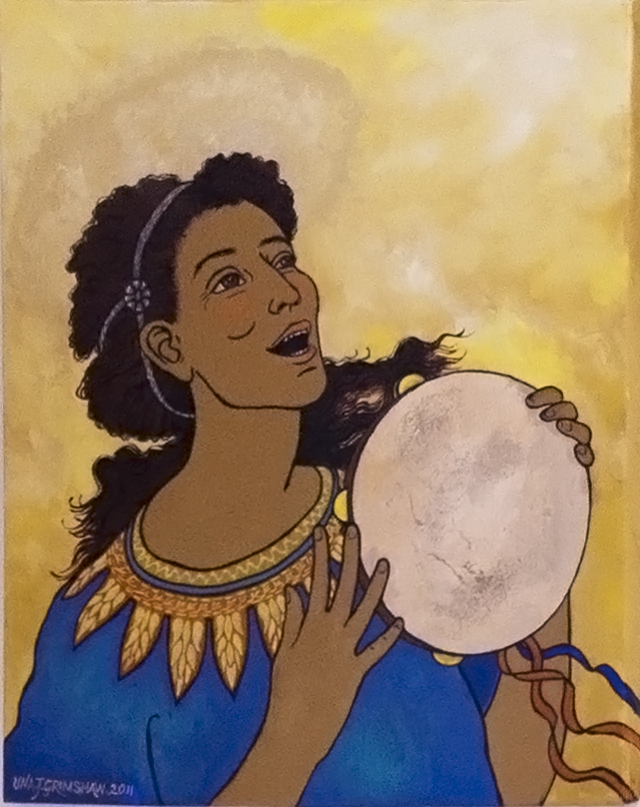
Una Grimshaw -Mary Singing- Acrylic
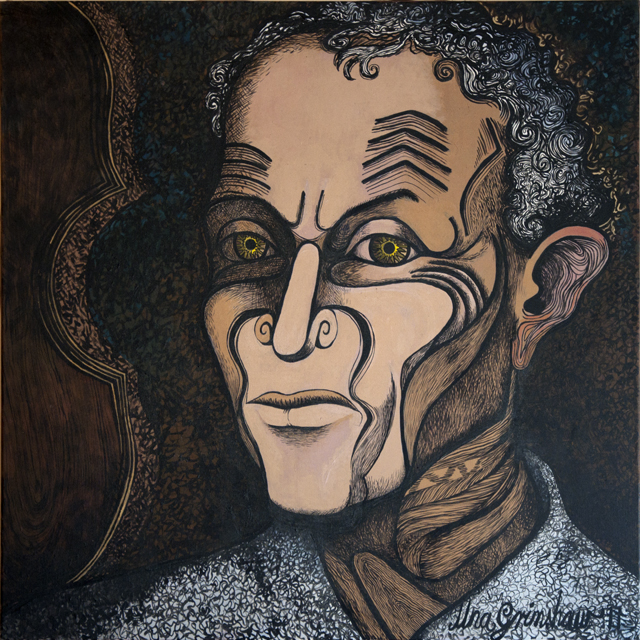
Una Grimshaw -David Morgan Composer Transposed - Acrylic - $2000
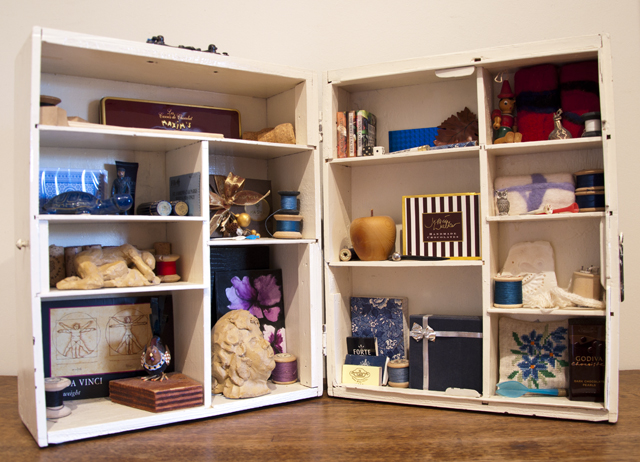
Sue Langford - Self Portrait - Assemblage - $500
Sue Langford’s self portrait assemblage consists of a small open vitrine, neat and self-contained, with mixed collection of favourite objects, including chocolate. We study the contents bending down to get as close as possible. We understand the meaning of those small items because we have our own collections. This is a piece for everyone who takes the time to connect.
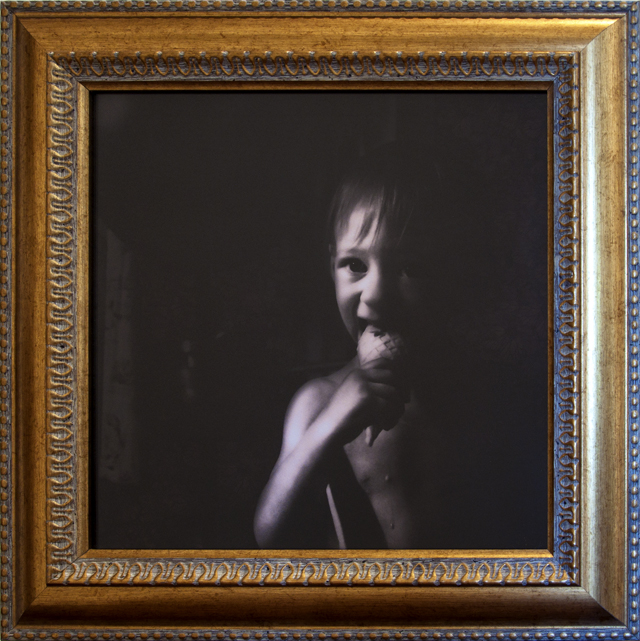
Kerry Youde - Night Delight - Digital Photograph - $200
“Night Delight” is a black and white photograph of a fey little person eating an icecream in the night. In the darkness of the background beautiful butterflies can just be seen, the markings on their wings barely visible. By Kerry Youde, the work is a new direction for her, portraying the soft focus world of the very young child and the parent’s delight in what she sees and how she captures the moment. More needs to be seen of this project, while there is still time – a delightful prospect!
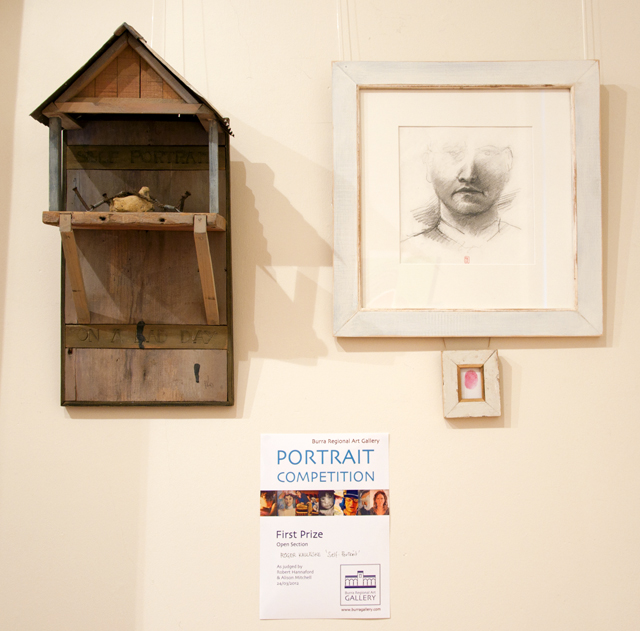
Roger Kalleske - Self portrait - Mixed - $400 Winner First Prize - Open Section
Roger Kalleske’s “Self Portrait” group of objects gives nothing away. We see a roofed shelf like a Greek temple, which contains an odd-shaped stone tied down with human hair. To the right is a framed drawing of part of a man’s face not including the eyes, and dangling below a small, framed thumbprint in dark pink. Many questions are asked of this piece – is there one answer, many, or none at all?
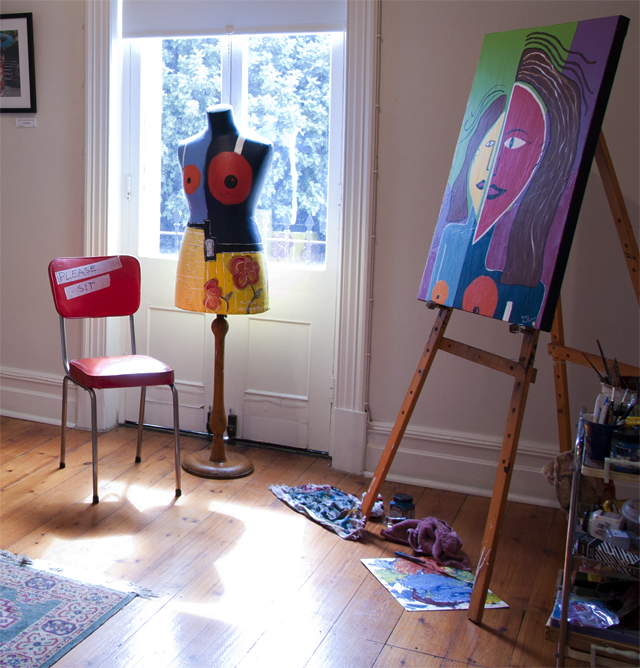
Tracy Vanderpeer - My Best side forward – self portrait - Mixed installation - $3,400
Tracy Vandepeer shows us a daring revelation of life as a painter, seen from her wheelchair – the body, the mess, the spirit and the art. The chair tells us to sit and take in the viewpoint. The colours are primary and the symbolism direct. There is a painted dressmakers dummy and a painting with similar marks. There are rags on the floor and a trolley with spilt paint. It is all thoroughly believable. Tracy wants us to think about this, and feel something. She is insistent.
We have a smaller group of entries than usual this year, putting pressure on the gallery in all sorts of ways. Please, artists, mark next year’s portrait competition in your calendar – March 26th to May 1st 2013 – “must do”. Not only does it give an opportunity for you, it supports the gallery for this unique event.
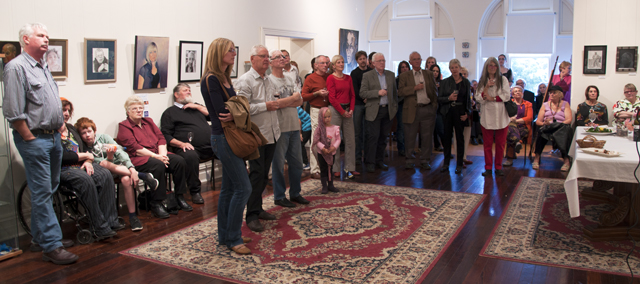
Opening Speech
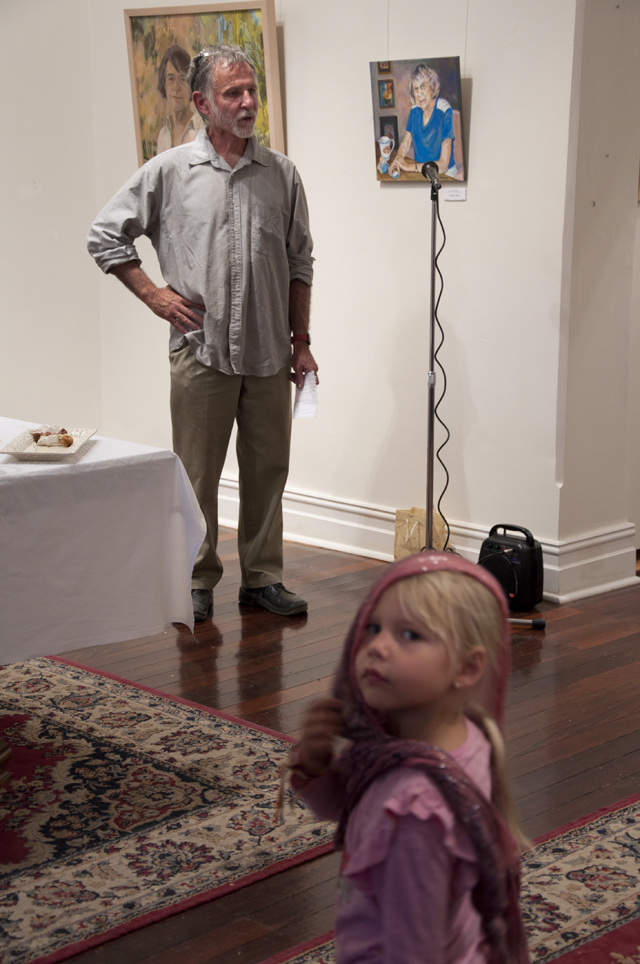
Robert Hannaford gives the opening speech
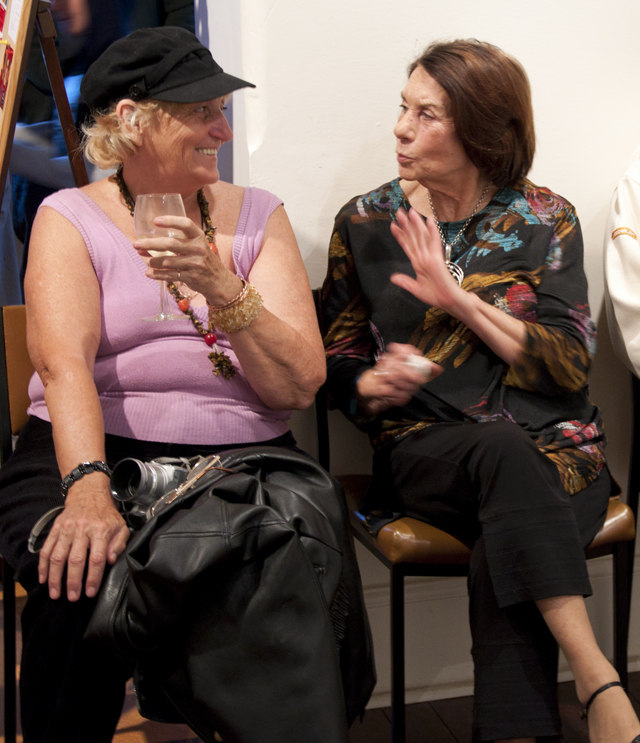
Chris & Mary
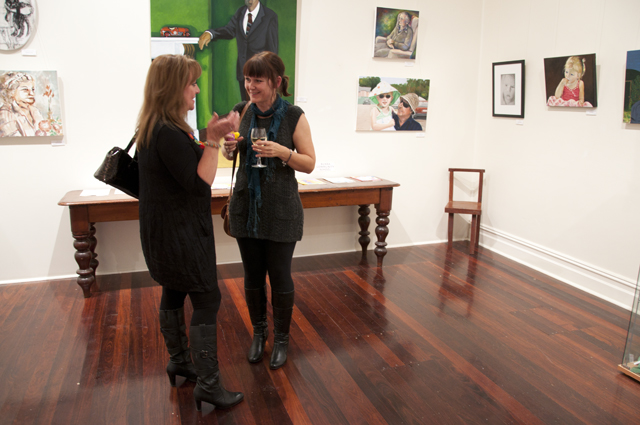
Rhonda & Heike
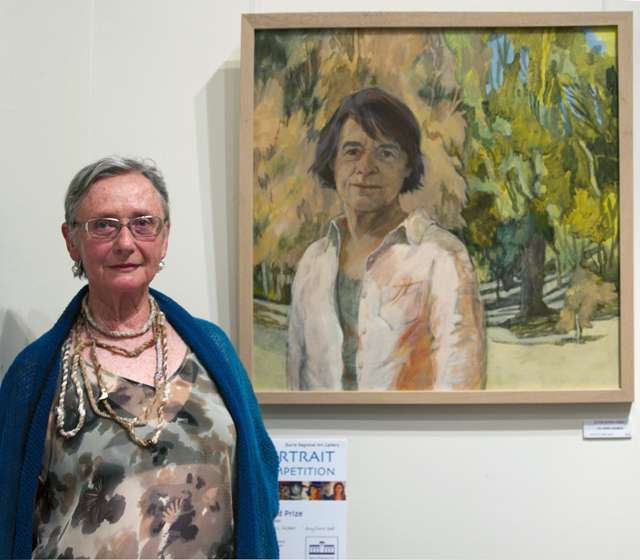
Lis Jones Ingman with her winning entry
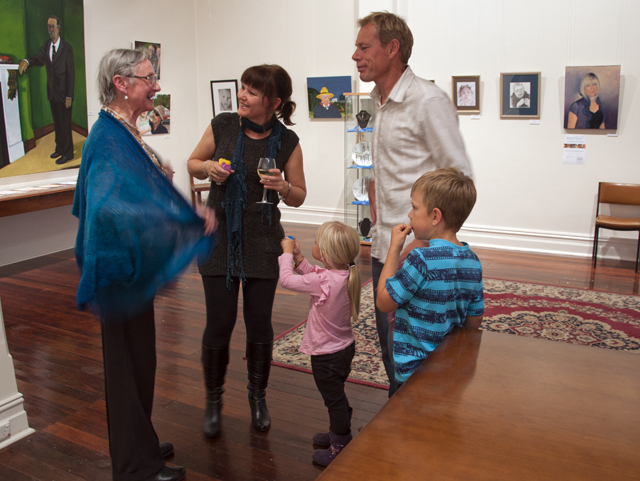
Heike & Tim congratulate Lis
Burra Regional Art Gallery was abuzz with excitement on Saturday evening with the opening of the annual Portrait Competition. A great variety of portraits were hanging on the walls of the Main Gallery and Annex. Perhaps not so large or controversial as the Archibald, but the work of our Mid North artists is up for all to see, meeting the challenge to show their work in this unique event.
The exhibition, which includes winning drawings by Years 1 to 4 of Burra Community School, was judged and opened by artists Robert Hannaford and Alison Mitchell. Their choice for First Prize was the work of Roger Kalleske of Kapunda, an installation entitled “Self Portrait”, and Second Prize Lis Jones Ingman of Burra for “Along Burra Creek”.